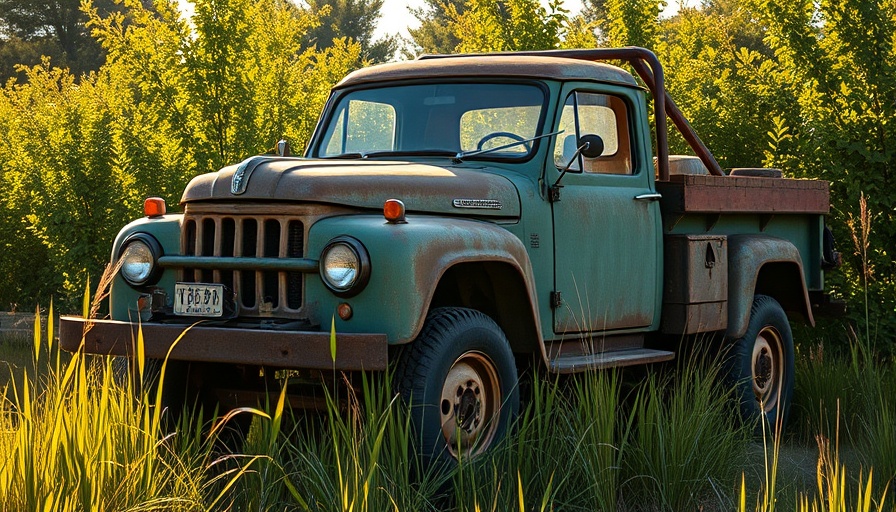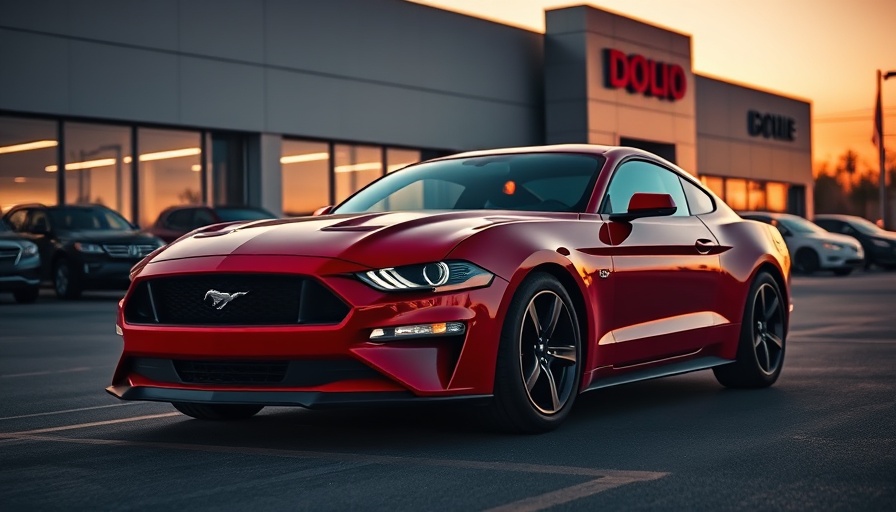
The Mustang Heritage: A Tribute to Service
The latest episode of Jay Leno's Garage spotlights a unique tribute: a Ford Mustang commemorating 40 years of service to the California Highway Patrol (CHP). This sweet and sleek machine is not just a modern-day muscle car; it’s outfitted to honor the Mustang’s long history with police forces, which began in the early 1980s. Leno and Ford's chief engineer, Dave Parase, delve into its special features while highlighting Ford's unwavering commitment to law enforcement vehicles.
In 'This CHP Mustang Honors 40 Years of Special Service | Jay Leno's Garage,' the discussion dives into the Mustang's storied history as a police vehicle, exploring key insights that sparked deeper analysis on our end.
Understanding the Power Under the Hood
This commemorative Mustang boasts a robust 460 horse-power engine—a significant upgrade in law enforcement standards that was rare in its predecessor vehicles. Parase explains that while this car functions as a tribute, it showcases the capabilities of police Mustangs which were designed to maintain high performance while remaining durable for long hours of service. The Mustang has evolved from the typical Crown Vic to a powerhouse that matches modern day needs for speed, efficiency, and safety.
The Modern Day Police Cruiser: Evolving Needs
As we celebrate the evolution of police vehicles, it’s fascinating to note that Ford provides nearly 50% of all police vehicles in the U.S. Market trends in law enforcement vehicles indicate a shift towards more compact and technologically advanced cars like the Mustang. While higher speeds and horsepower are essential, so are adaptations for modern technology such as license plate readers and advanced communication systems.
Historical Context of Ford’s Police Vehicles
From the first Ford Custom in 1950 to today’s array of specialized vehicles, Ford has built a notable legacy in police service. Parase sheds light on how the Mustang was considered when police departments began searching for alternatives to traditional law enforcement vehicles. Today, electrification is also making its way into police fleets, showcasing the need for hybrid models that can combine performance with energy efficiency.
Emphasizing Officer Comfort and Performance
The conversation also touches on the ergonomic aspects of police vehicles. Officers often spend long hours behind the wheel, necessitating comfort in design. From seat adjustments to the placement of controls, optimizing driver comfort remains a priority for Ford engineers. As Parase mentions, officers wear substantial gear, so understanding their needs is essential when designing a vehicle.
Challenges in Sustaining Iconic Models
The Mustang has had its ups and downs over the decades, often being compared with rivals such as Chevrolet’s Camaro. Yet, the emotional connection many have with the Mustang sets it apart. Parase reflects on how limited runs of special models make them even more desirable, highlighting the delicate balance Ford must maintain between making classic models accessible and keeping them exclusive.
Safety Enhancements and Technological Advancements
One key element in the discussion involves safety features equipped in modern police vehicles. Parase describes how Ford has worked closely with law enforcement agencies to integrate necessary hardware for safety checks and officer well-being. In an age where technology can oftentimes become overwhelming, ensuring the ease of use is vital for police officers on the go.
What Lies Ahead: Future Trends and Predictions
As the automotive industry eagerly anticipates more hybrid and electric models entering service, one can wonder how this will reshape the landscape of law enforcement vehicles. It’s crucial for police departments to not only stay ahead of vehicle technology but also match the public’s expectations for faster response times and increased safety features.
Conclusion: A Call to Appreciate Our Law Enforcement Allies
Ultimately, this episode of Jay Leno's Garage acts as both a nostalgic reflection on the Mustang's role in law enforcement and a look forward into the future of police vehicles. As we venture into an era laden with technological advancements, let's remember the critical role that law enforcement plays in our society. To honor them, recognize the innovation behind these celebrated vehicles, and appreciate those who protect our communities.
 Add Row
Add Row  Add
Add 




Write A Comment